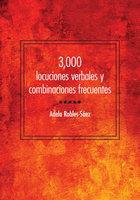
This extensive Spanish language reference explains the logic behind more than 3,000 frequently used verb phrases and combinations that make Spanish speech sound native. Each entry includes a definition of the phrase including its register, synonyms, antonyms, complementary expressions, grammatical patterns, and examples of how the combinations are used in easy and difficult structures. Most entries also point out other factors to be taken into account, such as whether an expression is to be used in isolation, after explaining a cause, or if it shouldn't be used at the beginning of a sentence. The book presents generative patterns for combinations based on conceptual metaphors and grammar structures, details families of expressions as separate charts, and contains an index by complement.
Featuring a wide range of varieties of Spanish, this volume includes both peninsular and New World Spanish and draws on both written and spoken corpora. Based on sound research in cognitive linguistics and written entirely in Spanish, this valuable reference will be useful to advanced students of Spanish, teachers of Spanish, translators, and writers.
Sample Entry
ABUNDARAbundar en detalles: Ofrecer mucha información. Esta expresión se utiliza en contextos neutros o formales. En forma negativa (no abundar en detalles) se usa para expresar de manera irónica que alguien no quiere ofrecer tanta información como necesitamos.
S: El informe sobre el golpe de estado V: abunda CR: en detalles sobre la intervención de la CIA
El estudio abunda en detalles estadísticos sobre la inmigración, pero no explica ni sus causas ni sus consecuencias.
La testigo reconoció que era amante del acusado, pero no abundó en detalles sobre su relación.
Contraste:Informal: Paquita llegó a casa borracha y con un ojo morado. Explicó a su marido que se había caído y nada más.Formal: La víctima llegó a su casa intoxicada y con señales de abuso físico. Explicó, sin abundar en detalles, que eran resultado de una caída.
Expresiones relacionadas:1. Entrar en detalles (frecuentemente no entrar en detalles): Discutir un tema en profundidad. ‘No entrar’ significa quedarse fuera, por lo tanto, no entrar en detalles significa no explicar ningún detalle, mientras que no abundar en detalles significa hablar poco sobre un tema.
El estudio abunda en detalles estadísticos sobre la inmigración, pero no explica ni sus causas ni sus consecuencias.
*El estudio entra en detalles estadísticos sobre la inmigración, pero no explica ni sus causas ni sus consecuencias.
Hasta ahora hemos tratado el tema de la absorción de este mineral de manera superficial. Ahora entraremos en detalles.
*Hasta ahora hemos tratado el tema de la absorción de este mineral de manera superficial. Ahora abundaremos en detalles.

Hippocrates, said to have been born in Cos in or before 460 BCE, learned medicine and philosophy; travelled widely as a medical doctor and teacher; was consulted by King Perdiccas of Macedon and Artaxerxes of Persia; and died perhaps at Larissa. Apparently he rejected superstition in favour of inductive reasoning and the study of real medicine as subject to natural laws, in general and in individual people as patients for treatment by medicines and surgery. Of the roughly 70 works in the “Hippocratic Collection,” many are not by Hippocrates; even the famous oath may not be his. But he was undeniably the “Father of Medicine.”
The works available in the Loeb Classical Library edition of Hippocrates are:
Volume I: Ancient Medicine. Airs, Waters, Places. Epidemics 1 and 3. The Oath. Precepts. Nutriment.
Volume II: Prognostic. Regimen in Acute Diseases. The Sacred Disease. The Art. Breaths. Law. Decorum. Physician (Ch. 1). Dentition.
Volume III: On Wounds in the Head. In the Surgery. On Fractures. On Joints. Mochlicon.
Volume IV: Nature of Man. Regimen in Health. Humours. Aphorisms. Regimen 1–3. Dreams.
Volume V: Affections. Diseases 1–2.
Volume VI: Diseases 3. Internal Affections. Regimen in Acute Diseases.
Volume VII: Epidemics 2 and 4–7.
Volume VIII: Places in Man. Glands. Fleshes. Prorrhetic 1–2. Physician. Use of Liquids. Ulcers. Haemorrhoids and Fistulas.
Volume IX: Anatomy. Nature of Bones. Heart. Eight Months’ Child. Coan Prenotions. Crises. Critical Days. Superfetation. Girls. Excision of the Fetus. Sight.
Volume X: Generation. Nature of the Child. Diseases 4. Nature of Women. Barrenness.
Volume XI: Diseases of Women 1–2.
(Volume IV also contains the fragments of Heracleitus’ On the Universe.)
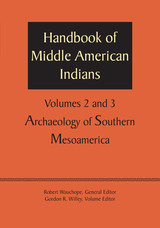
Archaeology of Southern Mesoamerica comprises the second and third volumes in the Handbook of Middle American Indians, published in cooperation with the Middle American Research Institute of Tulane University under the general editorship of Robert Wauchope (1909–1979). The volume editor is Gordon R. Willey (1913–2002), Bowditch Professor of Mexican and Central American Archaeology and Ethnology at Harvard University.
Volumes Two and Three, with more than 700 illustrations, contain archaeological syntheses, followed by special articles on settlement patterns, architecture, funerary practices, ceramics, artifacts, sculpture, painting, figurines, jades, textiles, minor arts, calendars, hieroglyphic writing, and native societies at the time of the Spanish conquest of the Guatemala highlands, the southern Maya lowlands, the Pacific coast of Guatemala, Chiapas, the upper Grijalva basin, southern Veracruz, Tabasco, and Oaxaca.
The Handbook of Middle American Indians was assembled and edited at the Middle American Research Institute of Tulane University with the assistance of grants from the National Science Foundation and under the sponsorship of the National Research Council Committee on Latin American Anthropology.

The definitive English edition of the “Father of Medicine.”
This is the first volume in the Loeb Classical Library’s complete edition of Hippocrates’ invaluable texts, which provide essential information about the practice of medicine in antiquity and about Greek theories concerning the human body. Here, Paul Potter presents the Greek text with facing English translation of five treatises that showcase the range of Hippocratic theory, philosophy, and practice: Ancient Medicine; Airs, Waters, Places; Epidemics 1 and 3; Precepts; and Nutriment. Also included is the famous Hippocratic Oath.
This Loeb edition replaces the original by W. H. S. Jones.
The works available in the Loeb Classical Library edition of Hippocrates are:
Volume I: Ancient Medicine. Airs, Waters, Places. Epidemics 1 and 3. The Oath. Precepts. Nutriment.
Volume II: Prognostic. Regimen in Acute Diseases. The Sacred Disease. The Art. Breaths. Law. Decorum. Dentition.
Volume III: On Wounds in the Head. In the Surgery. On Fractures. On Joints. Mochlicon.
Volume IV: Nature of Man. Regimen in Health. Humors. Aphorisms. Regimen 1–3. Dreams.
Volume V: Affections. Diseases 1–2.
Volume VI: Diseases 3. Internal Affections. Regimen in Acute Diseases.
Volume VII: Epidemics 2 and 4–7.
Volume VIII: Places in Man. Glands. Fleshes. Prorrhetic 1–2. Physician. Use of Liquids. Ulcers. Haemorrhoids and Fistulas.
Volume IX: Anatomy. Nature of Bones. Heart. Eight Months’ Child. Coan Prenotions. Crises. Critical Days. Superfetation. Girls. Excision of the Fetus. Sight.
Volume X: Generation. Nature of the Child. Diseases 4. Nature of Women. Barrenness.
Volume XI: Diseases of Women 1–2.

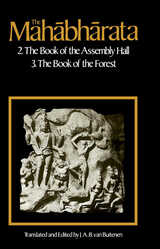
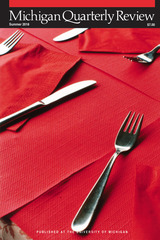

Syncretistic exegesis.
The philosopher Philo was born about 20 BC to a prominent Jewish family in Alexandria, the chief home of the Jewish Diaspora as well as the chief center of Hellenistic culture; he was trained in Greek as well as Jewish learning. In attempting to reconcile biblical teachings with Greek philosophy he developed ideas that had wide influence on Christian and Jewish religious thought.
The Loeb Classical Library edition of the works of Philo is in ten volumes and two supplements, distributed as follows. Volume I: Creation; Interpretation of Genesis II and III. II: On the Cherubim; The Sacrifices of Abel and Cain; The Worse Attacks the Better; The Posterity and Exile of Cain; On the Giants. III: The Unchangeableness of God; On Husbandry; Noah's Work as a Planter; On Drunkenness; On Sobriety. IV: The Confusion of Tongues; The Migration of Abraham; The Heir of Divine Things; On the Preliminary Studies. V: On Flight and Finding; Change of Names; On Dreams. VI: Abraham; Joseph; Moses. VII: The Decalogue; On Special Laws Books I–III. VIII: On Special Laws Book IV; On the Virtues; Rewards and Punishments. IX: Every Good Man Is Free; The Contemplative Life; The Eternity of the World; Against Flaccus; Apology for the Jews; On Providence. X: On the Embassy to Gaius; indexes. Supplement I: Questions on Genesis. II: Questions on Exodus; index to supplements.

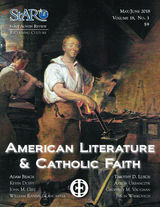
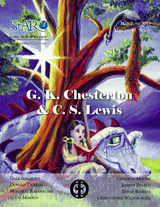


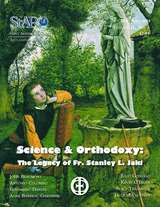




READERS
Browse our collection.
PUBLISHERS
See BiblioVault's publisher services.
STUDENT SERVICES
Files for college accessibility offices.
UChicago Accessibility Resources
home | accessibility | search | about | contact us
BiblioVault ® 2001 - 2024
The University of Chicago Press









